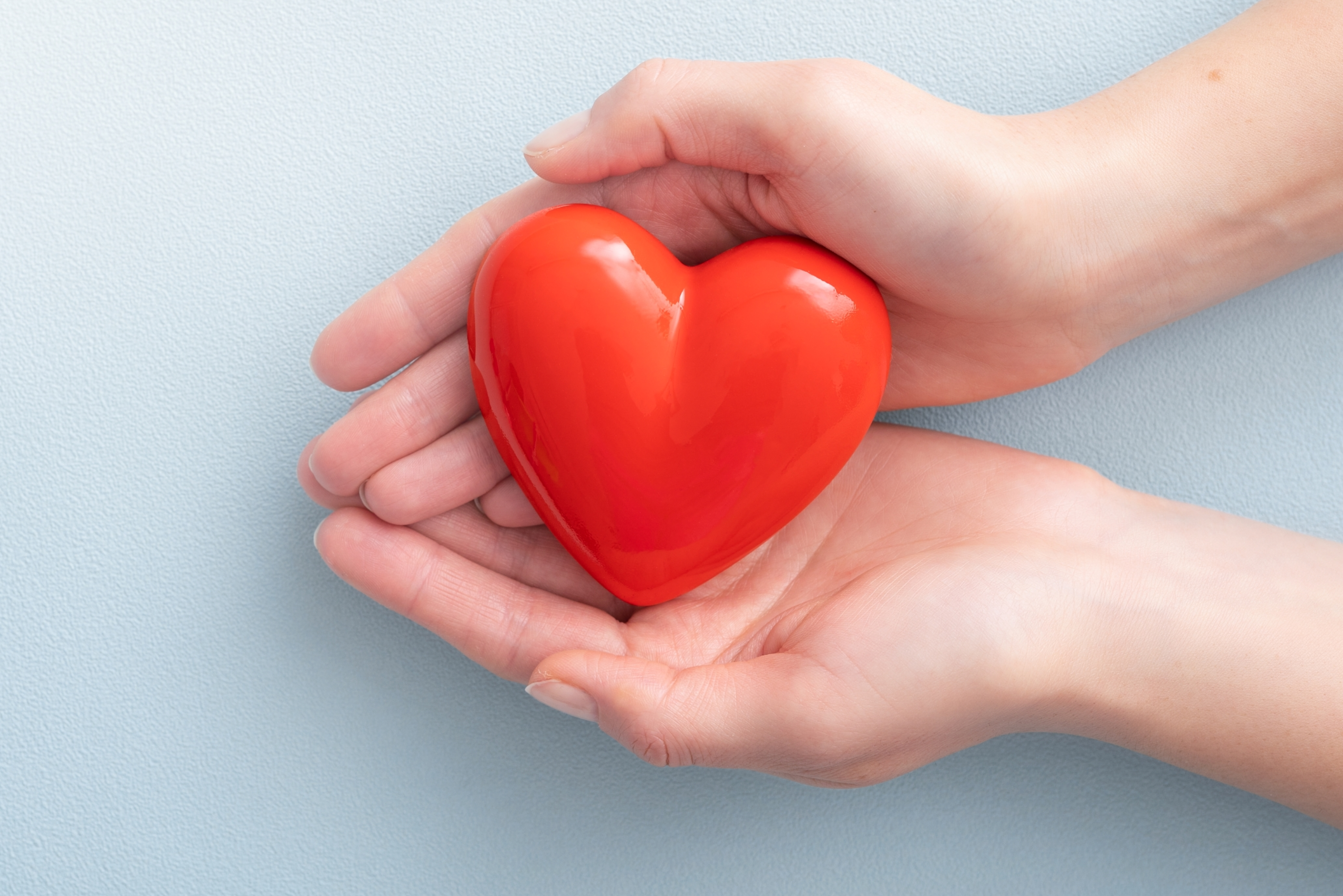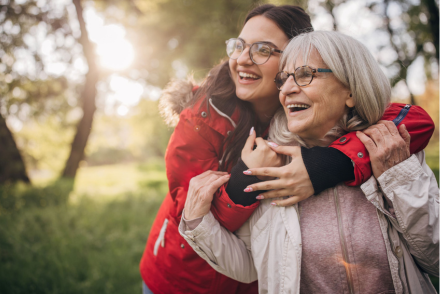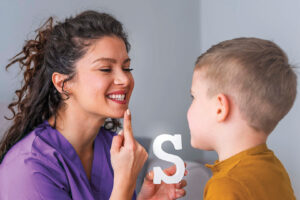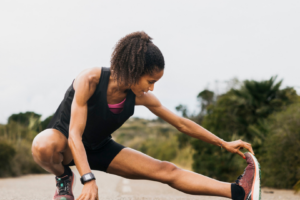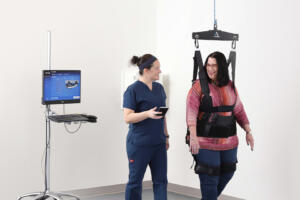Cutting-edge technology is helping patients with brain and balance issues learn to adjust their movements to become more stable – and more confident when walking.
Ataxia is a type of poor muscle control that can affect everything from walking and eye-hand coordination to speech and swallowing. It is typically caused by an issue with the cerebellum, the part of the brain that controls muscle coordination. For those with this condition, learning how to maximize bodily movement is the key to regaining balance.
The ZeroG® Gait and Balance System, a new treatment option at CentraState’s OceanFirst Rehabilitation Center, enables patients of all ages to practice walking and balance exercises more safely and confidently. It can help patients with ataxia and other conditions regain motor skills, rebuild muscle strength and retrain their nervous systems. Because the system is mounted to an overhead track that protects patients from falling, they can practice walking, balance tasks, sit-tostand maneuvers and walking up stairs.
Regaining Control After Stroke
Rachel Paverman was 25 years old when she learned she had a cavernous malformation (a cluster of blood vessels that put pressure on her brainstem), which had bled and caused a stroke. The Howell resident endured three brainstem surgeries to remove the lesion, suffering additional strokes in the process. She began physical therapy at CentraState in 2020 to improve her balance and regain some of her strength.
“I’m not able to put much weight on my right side because I have paralysis,” says Rachel, now 29, who uses a walker while out and a wheelchair at home. “It’s hard for me to know when my body is centered, so staying balanced is difficult.”
Under the guidance of CentraState physical therapist Danielle Scozzari, PT, DPT, the ZeroG system allows Rachel to walk without a spotter to catch her if she starts to fall.
“The system helps me translate my walking pattern in the real world and learn how to move better,” she explains. “It also helps me practice walking up and down stairs without holding onto the railing. Using ZeroG gives me more confidence to walk and allows others around me to feel confident that I can do it safely without assistance. If I lose my balance, the technology helps me learn how to correct it.”
Thanks to therapy, Rachel can now practice adaptive CrossFit, a form of high-intensity interval training. In conjunction with the new technology, she credits Scozzari with improving her condition.
“Dani knows me so well and is always thinking of innovative techniques for me to try,” she says. “I’ve seen a lot of therapists, but Dani is one of the best.”
Working Toward a Boy’s Dream of Walking
When Rider Hayek was 18 months old, he was diagnosed with ataxia due to an underdeveloped cerebellum. Because he is unable to walk on his own, his doctors recommended starting outpatient physical therapy at age three in addition to the therapy he received at school.
The Jackson resident has worked with CentraState physical therapist Edita Kotes Nestepny, MS, PT, for several years and recently began ZeroG therapy. The dynamic body weight support system helps improve his balance as he gets used to the motion and feeling of walking.
“PT has been a positive experience for him – and us,” explains Rider’s mother, Sarah. “CentraState has accommodated our schedule to ensure Rider has access to therapy. They’ve made it easy for us and enjoyable for him. The staff has pushed him and helped him get stronger.”
Rider, now 7, is a typical elementary school student who loves spending time with his sisters and playing with dinosaurs, monster trucks and trains. He even plays baseball in an adaptive league.
“Rider has improved so much since going to CentraState and working with Miss Edita,” adds his father, Josh. “He can stand much longer on his own. We won’t know if he can walk until he does. We hope he will and won’t stop trying until he can.”
PHYSICAL THERAPY & REHABILITATION AT CENTRASTATE
Learn more about the Physical Therapy and Rehabilitation services at CentraState.
